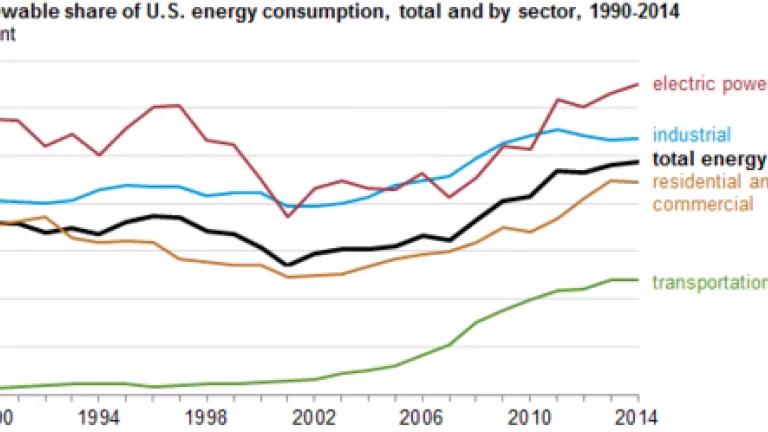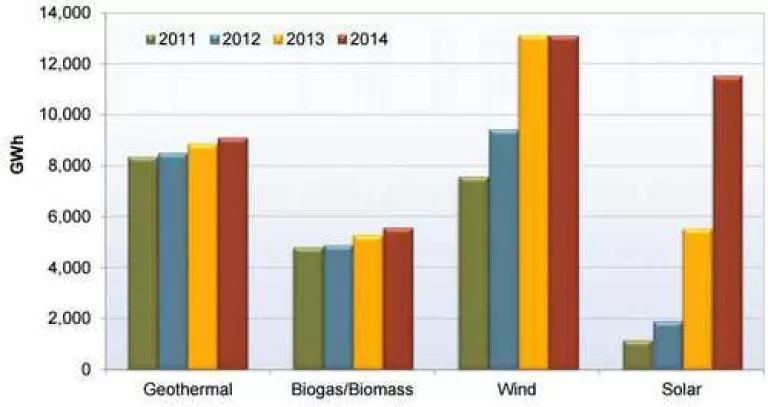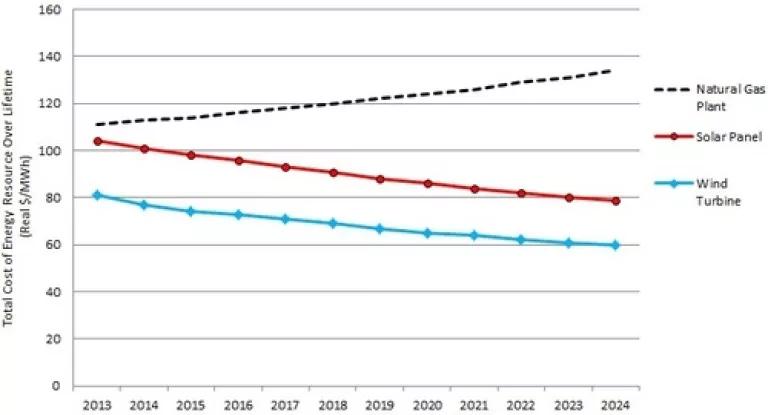Entering the Sustainable Energy Age: From Wood to Fossil Fuels to Historic Amounts of Clean Power

I'm guessing that the last time logs of wood were your only choice to warm your house or heat your oven is either: (A) a long time ago, or (B) never. But what might surprise you is that for half of this country's history, we relied on wood as the dominant source of energy to do these simple daily tasks. Wood use peaked in late 19th century and has a never fully recovered from that heyday.
Turn the page to the 20th century and enter fossil fuels, like coal and oil - which utterly dominated over the last hundred years. We used the coal to power all our newfound electric devices and oil to move ourselves around like never before, among many other uses. This, of course, came with the attendant consequence of emitting pollution that harms our health and the environment, not to mention firing up climate change--which gambles with billion-dollar weather events that wreak havoc on our communities when they strike.
But this year marks a historical shift in the story of America's energy choices. We see that the country relied on a virtually unprecedented amount of renewable energy (like wind turbines and solar panels) at the completion of 2014, according to this just-released U.S. Energy Information Administration data. Roughly 10 percent of the nation's energy use came from these cleaner sources of energy - the highest amount seen in recent history. That's like powering the world's largest economy for over a month without using any pollution-spewing coal, oil, or natural gas. And without breathing all their harmful pollutants, like soot that contributes to respiratory illnesses and heart disease.
The largest driver of this growth has been the staggering expansion of clean, renewable electricity, like wind turbines and solar panels. Also contributing to the increase have been renewable energy policies in the transportation sector, which make us less reliant on oil as the only thing to power our cars.
You can see this trend starkly in the electric sector, which accounted for half of all the renewable energy used in America. And California, which uses aggressive policies to stimulate investments into clean energy, exemplifies the present shift in the renewable electricity. Solar generation in the Golden State has roughly doubled every year since 2011. And wind energy has grown to become the largest single renewable electric resource.
Annual Renewable Energy Production Monitored by the California Independent System Operator

Even better--all this rapid growth in clean electricity has driven down the price of these resources to where, in California, it is now cheaper to invest in new solar or wind than a pollution-emitting natural gas plant, as reported this year by the California Energy Commission.
Comparison of Costs to Invest in New Energy Resources

When I originally described the historic levels of renewable energy achieved in 2014 above, I said "virtually" unprecedented levels of renewable energy. Because technically there was a time when America relied this heavily an energy source defined as renewable. It was back during the Great Depression. And can you guess which fuel it was? It's that log of wood that Americans originally used to heat their houses and cook their meals for the first 150 years of our history. And in the 1930s, Americans relied on a comparable share of wood as we now rely on all renewables (like wind turbines and solar panels). In the 1930s, wood energy was on the way out but now, in 2015, these new renewable resources are on the way in.
As we continue writing the energy history for America's 21st century, this new record of renewable power heralds a welcome change toward a cleaner and healthier energy future.
